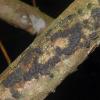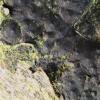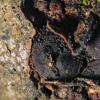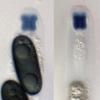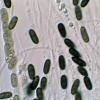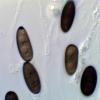
16-01-2026 00:45
Ethan CrensonHi all, On decorticated hardwood from a New York

18-01-2026 12:24
Hello.An anamorph located on the surface of a thin

17-01-2026 19:35
Arnold BüschlenHallo, ich suche zu Cosmospora aurantiicola Lite

08-12-2025 17:37
 Lothar Krieglsteiner
Lothar Krieglsteiner
20.6.25, on branch of Abies infected and thickened

10-01-2026 20:00
Tom SchrierHi all,We found picnidia on Protoparmeliopsis mur

13-01-2026 07:28
 Danny Newman
Danny Newman
Chlorociboria glauca on indet. decorticate logThe

15-01-2026 15:55
 Lothar Krieglsteiner
Lothar Krieglsteiner
this one is especially interesting for me because
Entoleuca mammata confirmation
Chris Yeates,
07-12-2014 19:10
 Bonsoir tous
Bonsoir tousthis was collected on a dead, attached branch of a small Salix tree (S. caprea/S. cinerea). Initially thought to be a Hypoxylon, the more I looked at it the less convinced I was and consultation of http://pyrenomycetes.free.fr/entoleuca/html/Entoleuca_mammata.htm leads me to be fairly confident that this is Entoleuca mammata, which would be new to me. I would be grateful for comments from others who may know the species as it would be new to Yorkshire and, apparently the second most northerly British record: https://data.nbn.org.uk/Taxa/BMSSYS0000006456
The images show most of the characters; I arrive at E. mammata because of:
* erumpent stromata on Salix
* shape of the ascus apex (stained here in IKI)
* shape of the spores - mostly oblong, with some asymmetrically ellipsoid; often with one or both ends thickened, and occasionally papillate at one end
* spore slit - full length, mostly straight, but some slightly transverse to sigmoid
* size of spores: 20.6-24.2 x 8.9-10.7µm
As ever, any comments would be welcome.
Amitiés
Chris
Jacques Fournier,
07-12-2014 19:48

Re : Entoleuca mammata confirmation
Good evening Chris,
no doubt about your identification. You are fortunate to have such plentiful material apparently in very good condition. Now that you know it and where to find it you will likely find it again.
Cheers,
Jacques
no doubt about your identification. You are fortunate to have such plentiful material apparently in very good condition. Now that you know it and where to find it you will likely find it again.
Cheers,
Jacques
Alain GARDIENNET,
07-12-2014 19:48
Re : Entoleuca mammata confirmation
Hi Chris,
No problem, I think. I've never found it*, so another opinion would be useful.
Photos are very good, congratulations.
Alain
* I will look for it.
Alain GARDIENNET,
07-12-2014 19:50
Re : Entoleuca mammata confirmation
Jacques/Alain 1-1
Jaklitsch Walter,
07-12-2014 20:51
Re : Entoleuca mammata confirmation
Hi,
I want to join you. In Austria this fungus is not rare. Usually I do not check such fungi nowadays, but know at least 3 places, where it appears regularly. Here it appears mostly in old stands of Salix cinerea in more or less boggy places. Nice images!
Cheers, Walter
By the way, the Austrian database of Fungi lists 7 places for Entoleuca mammata
http://austria.mykodata.net/Taxa_map.aspx?qvtaxIdTaxon=145572&
I want to join you. In Austria this fungus is not rare. Usually I do not check such fungi nowadays, but know at least 3 places, where it appears regularly. Here it appears mostly in old stands of Salix cinerea in more or less boggy places. Nice images!
Cheers, Walter
By the way, the Austrian database of Fungi lists 7 places for Entoleuca mammata
http://austria.mykodata.net/Taxa_map.aspx?qvtaxIdTaxon=145572&
Thomas Læssøe,
08-12-2014 10:12
Re : Entoleuca mammata confirmation
I have known this fungus for many years (UK, Sweden) but only recently did I succeed in getting Danish material - two sites, on Salix. Maybe it is spreading (maybe not).


